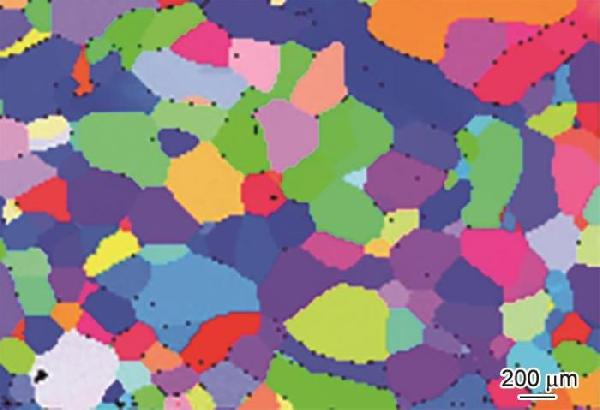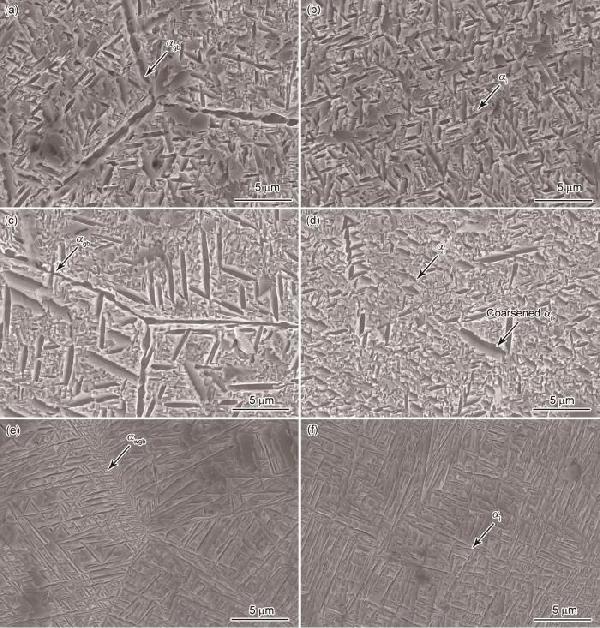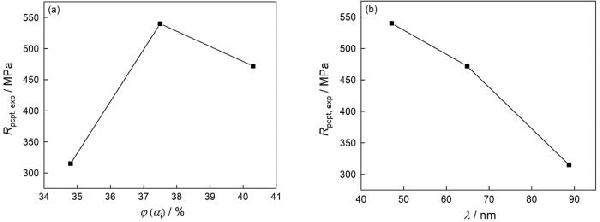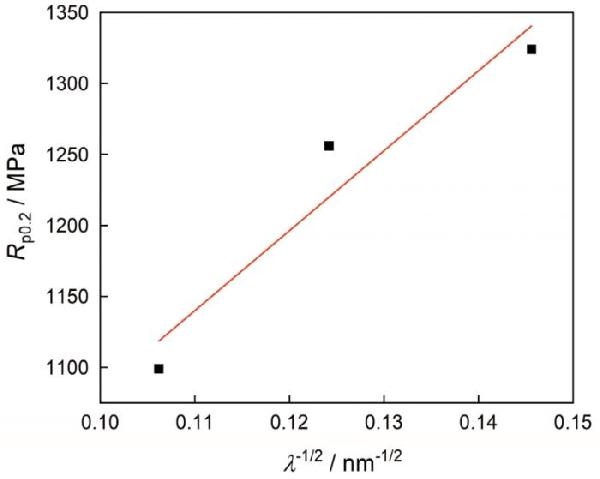
全部
▼
搜索
熱搜:
位置:中冶有色 >
> 熱處理對Ti-6Mo-5V-3Al-2Fe-2Zr合金拉伸性能的影響
 617
編輯:中冶有色技術(shù)網(wǎng)
來源:劉知多,張浩宇,程軍,周舸,張興君,陳立佳
617
編輯:中冶有色技術(shù)網(wǎng)
來源:劉知多,張浩宇,程軍,周舸,張興君,陳立佳




| Heat treatment | φ(αs)/% | λ/nm |
|---|---|---|
| HT1 | 34.8 | 88.75 |
| HT2 | 40.3 | 64.85 |
| HT3 | 37.5 | 47.15 |
| Heat treatment | Rp0.2/MPa | St.dev | Rm/MPa | St.dev | A/% | St.dev | Psp/GPa% |
|---|---|---|---|---|---|---|---|
| Before HT | 784 | 9 | 891 | 10 | 9.1 | 0.22 | 8.11 |
| HT1 | 1099 | 22 | 1196 | 26 | 5.1 | 0.17 | 6.10 |
| HT2 | 1256 | 19 | 1352 | 21 | 4.8 | 0.21 | 5.68 |
| HT3 | 1324 | 13 | 1421 | 11 | 7.7 | 0.13 | 10.94 |

|
Heat treatment |
Rp0.2,exp /MPa |
Rν+Rss+Rgb /MPa |
Rpcpt,exp /MPa |
|---|---|---|---|
| HT1 | 1099 | 784 | 315 |
| HT2 | 1256 | 784 | 472 |
| HT3 | 1324 | 784 | 540 |


 分享 0
分享 0
 舉報 0
舉報 0
 收藏 0
收藏 0
 反對 0
反對 0
 點贊 0
點贊 0

 中冶有色技術(shù)平臺
中冶有色技術(shù)平臺 2025年03月25日 ~ 27日
2025年03月25日 ~ 27日  2025年03月28日 ~ 30日
2025年03月28日 ~ 30日  2025年03月28日 ~ 30日
2025年03月28日 ~ 30日  2025年03月28日 ~ 30日
2025年03月28日 ~ 30日  2025年04月24日 ~ 27日
2025年04月24日 ~ 27日 
